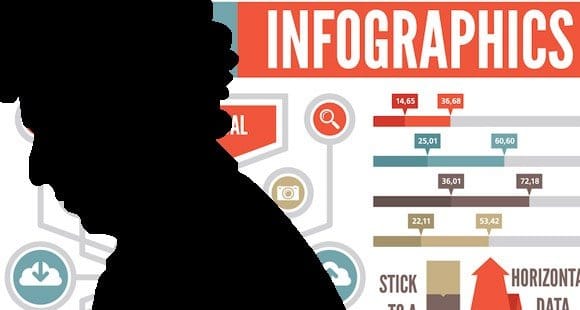The Best Growth Hacks for Increasing Organic Traffic

What is growth hacking? The term itself comes from Sean Ellis from a blog post in 2010. In the years since the term was coined, the concept has come into its own across the web and around the world.
The core of growth hacking is to put growth ahead of everything else when launching and growing a business. Rather than invest in a standard advertising campaign through TV, radio and other forms of media, growth hackers attempt to gain the same awareness through cheap or free methods. Social media, viral marketing and word of mouth are the bread and butter of the growth hacker.
Online, you can use growth hacking techniques to drastically increase your incoming traffic for little or no investment beyond time and knowledge. Think of the difference between marketing and growth hacking as the difference between PPC and organic traffic. PPC costs money to bring in traffic, while organic traffic simply requires knowledge of SEO and time spent implementing that knowledge.
The difference is that growth hacking, unlike organic SEO, can be a very quick process. A single viral exchange can bolster the traffic of a site a hundred times over, with little or no investment. Even a traditional expensive marketing campaign will be slower.
What growth hacking techniques can you put to use? There are many to choose from, some which you might not even realize are growth hacks, given how commonplace they have become.
One thing to remember is that, while many of the following techniques are commonplace in today’s online marketing, it’s the way you implement them that makes them into growth hacks. Take PPC advertising, for example. You can dump money into the system and get meager returns, or you can take the time to make smart decisions, experiment and test your ads for an always-increasing ROI. When you make smart decisions, you’re leveraging the PPC tool for all its worth, increasing your traffic that much faster.
SEO and Content Marketing
These two go hand in hand today. SEO is all about writing and publishing great content. It’s considered something of a standard today; if you’re not running a blog with valuable information, you’re falling behind. This is a primary example of what was once a growth hack and has become the standard.
To turn SEO and content marketing into a growth hack once more, you need to dig deep into your audience. SEO only works if you can tap into what users are searching for, and content marketing only works if you can provide value to answer the questions your users ask. Finding a creative way to gather and apply that information makes this a growth hack with lasting potency.
Podcasting
A podcast works much like a blog post, but it doesn’t gain the benefit of SEO due to the search engine’s inability to index the contents of an audio file. A podcast has a certain appeal, beyond that of a blog post, because the audio connection of hearing the voice of someone you respect is potent. Additionally, a podcast can be put on an MP3 player, tablet or smartphone and played on the go, such as on bus rides or long commutes. This gives the podcast a certain amount of accessibility that other forms of content lack.
Growth hacking with a podcast is a matter of establishing a niche presence where you can dominate. There are already high profile, high budget podcasts in general interest categories, much like there are already high profile, high budget websites in broad niches. Your site couldn’t easily compete with Gawker media, and your podcast probably couldn’t compete with theirs on an even stage. Finding a niche with narrow appeal allows you to dominate a space otherwise unoccupied.
Infographics
Infographics are easy to create. They are also easy to fail. For every viral, compelling infographic, there are hundreds of infographics that look like little more than a PowerPoint slide stacked with pie charts.
Infographics take advantage of the natural flexibility of imagery on the web. You have the benefit of infinite creativity and interactivity to create something utterly unique. If all you’re doing is putting bar graphs in a grid with captions, you’re not growth hacking.
A creative infographic requires a good topic. You can’t just cover boring industry statistics; you need to pick something noteworthy and interesting. You need to find or aggregate enough data to support your graphic. Most compelling infographics also include a certain amount of narrative; reasoning to go from point A to point B, with the data to back it up. You’re not just presenting data, you’re presenting conclusions and actionable information.
Animated infographics and HTML5 interactive graphics can be very compelling, but you need to be aware of mobile users. A static offering that can be shared will help your viral distribution, and draw more users to see the full version.
Mutually Beneficial Advertising
One popular growth hack is the ability to piggyback on the marketing efforts of another established business. Identify a business that shares your target audience, but who isn’t a direct competitor. As long as you’re a potential partner, rather than a threat, you can get away with a lot. Approach these businesses and ask for advertising partnerships.
One great idea is the promo swap. It’s like the old days of link swaps for SEO; you post a link to their blog, they post a link to your blog, and you both benefit. You can’t use such transparent SEO tactics, but you can use similar swaps in other spheres. Promote each other through email newsletters, Twitter messages, video introductions and contests. Your audiences, already very similar, will mix and merge.
You can establish partnerships through blogs, as long as your niches can be related. Become irregular contributors to each other’s blogs, through guest posting. This will give you a legitimate means of linking to each other’s sites, without tripping Google’s penalty flags.
Another option is the thought leader interview. Interviews lend legitimacy to both sides involved. Users give you more credibility for conducting an interview, because you must be worth respect if someone deigned to be interviewed for your site. Conversely, if someone approached you for an interview, you must have thoughts of such value that they’re worth listening to.

 ContentPowered.com
ContentPowered.com







John Allred
says:I think SEO with unique and high quality content is the best way to get good traffic. If traffic from search engines is retained and we made them direct traffic, nothing can complete this method. Because direct traffic is the best way to be safe from search engine penalties like a panda and penguin